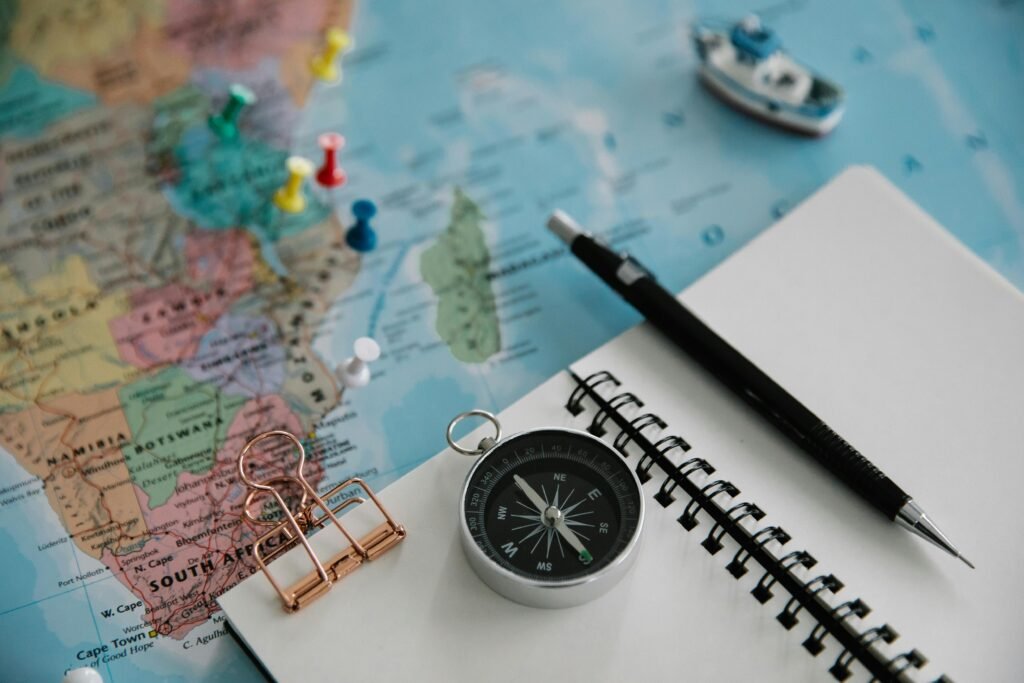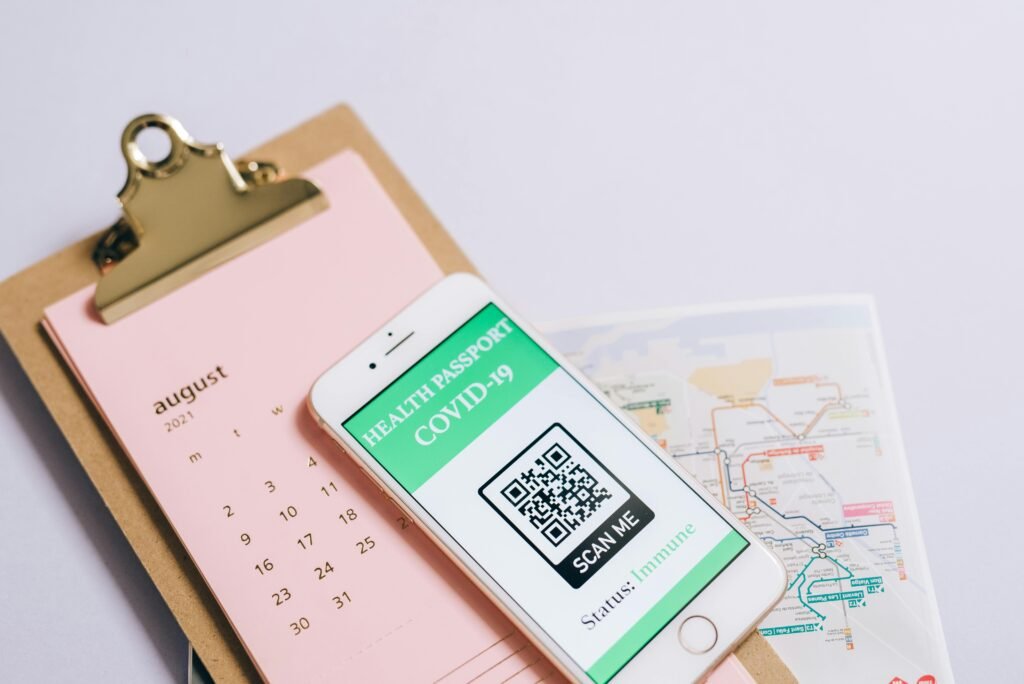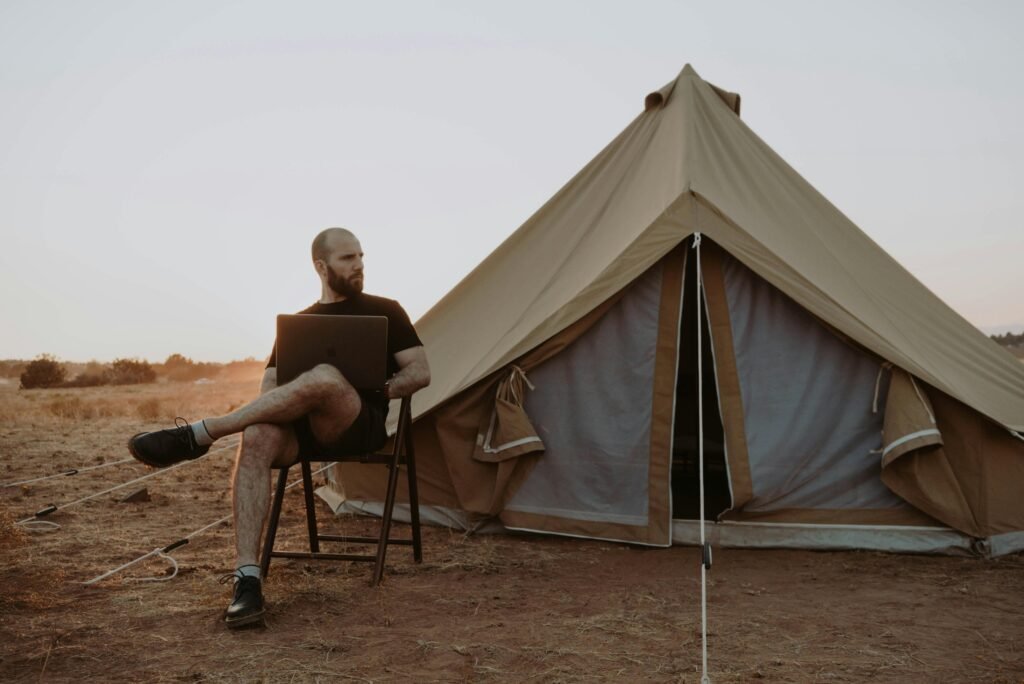When the idea of travel makes your heart race, it helps to stop and figure out exactly what’s sparking that tension. Everything starts with pinpoint what triggers your stress—from the thought of turbulence to the mountain of planning chores.
Once you’ve named the exact source of anxiety, you’ve won half the battle. That clarity lets you chip away at each fear, step by manageable step.
Understanding The Roots Of Your Travel Anxiety
Do you freeze when you see a long to-do list or tense up at the thought of takeoff? Pinpointing whether it’s the logistics or the motion itself gives you a clear starting line.
Common Triggers For Travel Anxiety
Recognizing your personal stressors makes it easier to prepare and respond. Some of the most frequent culprits are:
- Fear of Flying (Aviophobia) A feeling of losing control in mid-air, often tied to safety worries.
- Logistical Overwhelm Juggling bookings, itineraries, and packing lists until it all feels impossible.
- Health and Safety Concerns Worries about illness abroad, accessing medical care, or falling victim to crime.
- Social Anxiety Stress over chatting with strangers, navigating language barriers, or fitting into new cultures.
- Fear of Leaving Home Separation from loved ones, pets, or the comfort of your usual routine.
It’s one thing to have pre-trip jitters and another to face sleepless nights or cancel reservations. When worry hijacks your plans, it’s time to bring in effective coping tools.
Travel anxiety isn’t a sign of weakness; it’s a common response. Once you map out your specific fears, each challenge turns into a problem you can solve.
The Influence Of External Factors
Beyond personal history, media coverage and headlines can fan the flames of worry. For instance, when reports highlight 33 deadly air crashes in early 2025, even seasoned flyers can find their confidence shaken.
If planning logistics is what sends your stress levels sky-high, our guide on how to plan international travel walks you through a clear, step-by-step roadmap. That focused structure is often the reset button you need to shift from panic mode to genuine excitement.
How to Prepare for a Stress-Free Departure

The best way to tackle travel anxiety often starts long before you ever step foot in an airport. Think of it this way: proactive preparation is your best defense against the "what-if" monster that loves to creep in before a big trip.
When you take charge of the planning, you’re not just booking flights and hotels; you’re building a foundation of confidence. It’s about shifting your mindset from worrying about what could go wrong to actively making sure things go right. This creates a sense of order that can quiet even the busiest mind.
Create a Balanced Itinerary
That feeling of dread often comes from the fear of the unknown. An itinerary that finds the sweet spot between a solid plan and room for spontaneity can be a game-changer. You don't need to schedule every single minute, but having a basic framework provides a huge sense of comfort.
- Lock in Your Anchors: Get your flights, accommodation, and any can't-miss tours or activities booked ahead of time. Getting these big-ticket items sorted eliminates a massive source of logistical stress.
- Outline Your Days (Loosely): Jot down one or two main things you want to do each day. This gives your trip a sense of direction without creating a stressful, high-pressure schedule.
- Schedule 'Nothing' Time: Seriously, block out chunks of free time in your calendar. This builds in flexibility for those amazing, unexpected discoveries and keeps you from feeling overwhelmed by a jam-packed agenda.
An overly rigid schedule can create its own brand of anxiety. The idea is to build a safety net of plans, not a cage. This way, you feel prepared but still have the freedom to embrace the moment.
Research Beyond the Highlights
Knowledge is power, especially when it comes to calming travel nerves. The more you know about your destination, the more that apprehension can transform into genuine excitement. Go deeper than just the top tourist spots and look into the practical stuff that makes a new place feel less intimidating.
A little digging into local customs, a few basic phrases in the native language, or how the public transport system works can make a world of difference. Knowing the tipping etiquette or how to buy a bus ticket removes those small, awkward moments that can easily spiral into stress. It's also smart to note the location of your country's embassy and a few nearby clinics—just in case.
Pack Smarter, Not Harder
We've all been there: the frantic, last-minute packing spree. It’s a guaranteed recipe for panic and almost always results in forgetting something important. This is where a little forethought pays off big time.
Start gathering your things a few days in advance and use a system. That nagging worry about forgetting your passport or medication? It vanishes when you pack methodically. For a complete breakdown, check out our guide on how to pack efficiently to make the process completely stress-free.
Make Strategic Travel Choices
Even small decisions during the booking phase can have a huge impact on your stress levels. For example, your seat selection can make or break your flight experience. If heights make you uneasy, grabbing an aisle seat can provide a much-needed sense of space and distance from the window.
The timing of your flight matters, too. Opting for off-peak hours can help you avoid the chaotic rush of a crowded airport. It's a real issue for many people—a 2025 survey on travel habits revealed that nearly 30% of travelers have a fear of flying, with a staggering 14% having canceled trips because of it. By choosing a less busy flight or a better seat, you're taking control of your environment and setting yourself up for a calmer journey.
To help you get organized, here’s a simple checklist to walk you through the key steps in the weeks and days before you leave.
Pre-Trip Anxiety Reduction Checklist
This checklist breaks down proactive steps you can take to get ahead of travel anxiety, organized by when you should tackle them.
| Action Item | Why It Helps Reduce Anxiety | Recommended Timing |
|---|---|---|
| Book Flights & Accommodation | Secures the major logistics, creating a solid foundation for your trip and preventing last-minute panic. | 2-3 Months Out |
| Research Destination Basics | Familiarity reduces fear of the unknown. Knowing about transport, customs, and safety makes you feel more in control. | 1 Month Out |
| Draft a Loose Itinerary | Provides structure without being restrictive. Knowing what's planned for each day quiets "what will I do?" worries. | 3-4 Weeks Out |
| Arrange Pet/Home Sitters | Eliminates a major source of worry about what's happening back home, letting you focus on your trip. | 3 Weeks Out |
| Create a Packing List | A physical list prevents the mental load of trying to remember everything. Checking items off is incredibly satisfying. | 2 Weeks Out |
| Start Packing Non-Essentials | Reduces the overwhelming task of packing everything at once. Gradually packing feels much more manageable. | 1 Week Out |
| Confirm All Reservations | A quick email or call to confirm flights and hotels provides final peace of mind that everything is set. | 3-4 Days Out |
| Pack Carry-On & Documents | Having your most critical items (passport, meds, chargers) ready to go eliminates last-minute frantic searches. | 1-2 Days Out |
Following these steps won't just get you packed and ready; it will systematically dismantle many of the common triggers for pre-trip anxiety, leaving you feeling confident and excited for the adventure ahead.
Using Cognitive Techniques To Reframe Your Mindset

Travel anxiety often starts as a whirlwind of “what ifs” that hijack any excitement. Yet, with a few simple mental habits, you can calm that storm and bring back clarity.
Think of these methods as your mental carry-on. When worry creeps in, you’ll know exactly which tool to unpack.
Separate Facts From Feelings
Emotions can be misleading, especially when fear takes hold. The next time you sense a pang of panic—say, at the thought of flying—pause and ask yourself what’s real.
- A 2024 MIT study showed air travel is 40 times safer than it was in the 1960s.
- Only 0.02% of U.S. domestic flights in 2024 were involved in reportable accidents.
- Trusted outlets like CBS News back these findings.
Is this thought based on a feeling or a fact?
That brief question can interrupt the spiral of irrational fear and help you reclaim control.
Visualize A Successful Trip
Daydreaming doesn’t have to be random. By mentally rehearsing a smooth journey, you teach your brain to expect positive outcomes.
- Picture the Details: Imagine yourself sailing through security, discovering your gate without stress, and getting comfortable in your seat.
- Feel the Calm: Envision the gentle hum of engines as you listen to your favorite playlist or dive into a good book.
- Focus on the Destination: See yourself stepping off the plane, excited for your first meal in a new city.
This exercise replaces uncertainty with a clear, reassuring blueprint.
For a more structured itinerary, explore the benefits of using an AI travel planner to map out every leg of your adventure.
In-the-Moment Strategies to Stay Calm While Traveling
https://www.youtube.com/embed/mL6MeScARYY
Even with the best-laid plans, anxiety can bubble up unexpectedly. It might be the sudden crush of people at the security gate or that jolt of the plane as it starts its takeoff roll. When that happens, you need a few go-to tools to get you through the moment.
Think of these as your mental first-aid kit. They're simple, discreet actions you can take right in your seat to settle your nervous system and pull your focus back to the here and now.
Anchor Yourself with Grounding Techniques
When your mind starts racing with "what if" scenarios, grounding techniques are the quickest way to pull it back to reality. The whole point is to interrupt that panic cycle by reconnecting with your immediate physical surroundings.
The 5-4-3-2-1 method is a classic for a reason—it works, and no one even has to know you're doing it. You just silently identify:
- 5 things you can see: The texture of the seatback in front of you, a crack on the pavement outside the bus window, the cover of the magazine in your bag.
- 4 things you can feel: The coolness of the armrest, your feet planted firmly on the floor, the soft fabric of your scarf.
- 3 things you can hear: The low hum of the plane's engine, the quiet chatter a few rows back, the click of a seatbelt.
- 2 things you can smell: The faint scent of coffee brewing, the clean smell of your hand sanitizer.
- 1 thing you can taste: A sip of water or the minty flavor of your gum.
This sensory scan forces your brain to pay attention to the present, tangible world, which doesn't leave much room for anxious thoughts. It's an immediate way to tell your body, "I'm right here, and I'm safe."
Use Your Breath as a Calming Tool
Your breath is always with you, making it one of the most powerful and accessible tools for managing anxiety spikes. When we get stressed, our breathing often becomes shallow and quick. By consciously slowing it down, you send a direct signal to your brain that it's time to chill out.
One of the easiest methods is box breathing. Just picture a square and trace it with your breath: inhale slowly for a count of four, hold for four, exhale for four, and then hold again for four. Keep repeating the cycle until you feel your heart rate start to come down.

As you can see, while many things can help, focused breathing exercises consistently provide some of the most significant and immediate relief from anxiety symptoms.
Build a Personalized Distraction Toolkit
Distraction isn't about avoiding your feelings—it's about consciously shifting your attention to something more pleasant or engaging. Before you even leave home, it's a great idea to load up your phone or tablet with a few go-to options that work even without Wi-Fi.
The secret is to pick things that require active mental participation, not just passive watching. This makes it much harder for those intrusive, anxious thoughts to find a way in.
Here are some ideas for your toolkit:
- Podcasts that tell a story: A true-crime series or a riveting interview requires you to listen closely to follow along.
- Games that make you think: Puzzle games like Sudoku, a crossword, or a complex strategy game demand your full concentration.
- A calming playlist: Curate a collection of songs you know help you relax and lower your heart rate.
- An absorbing book: Get lost in a novel that truly pulls you into its world.
Having these options ready to go puts you back in the driver's seat. Instead of feeling helpless when anxiety pops up, you have a menu of things you can do to regain a sense of control.
To help you choose the right technique for the right moment, here’s a quick comparison of these in-transit strategies.
Comparing In-Transit Anxiety Techniques
| Technique | Best For | How It Works |
|---|---|---|
| 5-4-3-2-1 Grounding | Sudden, intense waves of panic or a feeling of detachment. | Reconnects you to the present by forcing your brain to focus on sensory input from your immediate environment. |
| Box Breathing | Physical symptoms like a racing heart, shallow breath, or tense muscles. | Intentionally slowing your breath sends a signal to your parasympathetic nervous system to calm down. |
| Engaged Distraction | Lingering, rumbling anxiety or when you're stuck waiting (e.g., during a delay). | Redirects your mental energy to a task that requires active focus, leaving less room for anxious thoughts. |
Each tool has its place, and knowing which one to reach for can make all the difference. Practice them at home when you're calm, so they feel familiar and easy to access when you really need them.
How to Enjoy Your Destination Without Anxiety

Touching down doesn’t erase the nerves—it just shifts focus from the flight to the rush of new sights, sounds and smells.
Carving out a mini “home base” inside your room can be a powerful anchor. Familiar rituals remind your brain that you’re safe, even when everything else feels unfamiliar.
In Bali, I used to light incense beside my journal each night. That one scent signaled calm no matter how packed my day had been.
Create Home Base Routine
- Cozy Corner: Pick a quiet spot in your room for reading, stretching or meditation.
- Morning Ritual: Pair your favorite mug with 5 minutes of deep breathing before heading out.
- Evening Wind-Down: Cue up a playlist you know by heart or roll out a yoga mat to stretch.
- Snack Station: Stash a few comfort bites so you’re never hunting for food when hunger hits.
- Personal Touch: Display a photo, a keepsake or a small memento from home.
Handle Sensory Overload And Customs
Bustling markets, honking tuk-tuks and unfamiliar aromas can hit like a sensory tsunami. Add local customs into the mix and you’ve got extra pressure to “get it right.”
- Do Your Homework: Skim a blog or guide about greetings, dress codes and tipping norms.
- Pause And Name It: When your pulse races, stop and say to yourself, “I’m curious, not fearful.”
- Embrace Cues: Turn cultural quirks into conversation starters instead of stress triggers.
A little preparation in cultural cues can turn moments of panic into chances to connect.
Balance Rest And Discovery
Trying to cram every landmark into one day often backfires—hello, burnout. Instead, weave in smart breaks and spontaneous detours to keep your energy up.
- Two-Hour Window: Block out a mid-afternoon break in a quiet café, park or courtyard.
- Spot The Signs: Increased irritability or zoning out? Honor it by slowing down.
- Open-Ended Evening: Keep at least one evening free for a random alleyway or local chat.
- Tune-Out Signals: Earplugs or sunglasses give you permission to fade into the background.
Imagine hitting that afternoon slump at a bustling plaza—duck into a nearby courtyard, sip some water and let yourself breathe.
With that simple pause, you’ll bounce back faster. Then, approach every sunset and side street with fresh eyes.
Check out our guide on best solo travel destinations for inspiration when planning your next stress-free adventure.
Discover more tips on thriving abroad and crafting an anxiety-free routine at The People Travels resource center.
Common Questions About Managing Travel Anxiety
Even with the best strategies in your back pocket, you might still have a few lingering questions about handling travel anxiety. Let's tackle some of the most common ones that come up.
Think of this as a quick-reference guide for those "what if" moments that can creep in before a trip.
Is Travel Anxiety a Real Medical Condition?
While you won't find "travel anxiety" listed as a formal diagnosis, it's an incredibly real experience. It usually connects to recognized conditions like specific phobias—think aviophobia (fear of flying) or agoraphobia (a fear of being in situations where it feels hard to escape).
Often, it’s a specific manifestation of a generalized anxiety disorder. If your fear of travel is genuinely holding you back from seeing family or seizing new opportunities, it’s a good idea to talk to a mental health professional. They can offer proven approaches like Cognitive Behavioral Therapy (CBT) to help you work through it.
What if I Have a Panic Attack on the Plane?
This is probably one of the biggest fears for anxious travelers, but having a game plan makes all the difference. The trick is to jump into action the moment you notice those first tell-tale signs, whether it's a racing heart, shallow breathing, or that overwhelming sense of dread.
Don't wait. Immediately dive into those in-the-moment techniques we talked about earlier:
- Box Breathing: Inhale for four, hold for four, exhale for four, and hold again for four. This simple rhythm is a powerful tool for calming your nervous system right down.
- 5-4-3-2-1 Grounding: Name five things you can see, four you can touch, three you can hear, two you can smell, and one you can taste. This technique forces your brain to focus on the present moment, not the fear.
- Find a Solid Distraction: Pop in some noise-canceling headphones and fire up an engaging podcast, an audiobook, or a puzzle game that demands your full attention.
Having a plan for a panic attack isn’t about expecting disaster. It’s about arming yourself with the confidence to handle it, which, ironically, is often the very thing that stops it from happening.
Can Certain Foods Make My Anxiety Worse?
They absolutely can. What you eat and drink leading up to and during your travels can either soothe your nerves or send them into overdrive. To give yourself the best shot at a calm journey, try to steer clear of the usual suspects.
High-caffeine drinks are a big one. Coffee and energy drinks can kickstart physical symptoms that feel just like anxiety—a pounding heart, restlessness, and jitters. Sugary foods and drinks are another culprit; they send your blood sugar on a rollercoaster, which can lead to mood swings and irritability.
Instead, reach for calming options like herbal tea and stick to protein-rich snacks like almonds or Greek yogurt. These will help keep your energy levels steady and your mind much clearer.
A well-organized plan is another huge stress-reducer. Knowing what your day looks like removes the fear of the unknown, which is a massive trigger for anxiety. If you feel overwhelmed by the planning part, our guide on how to make a travel itinerary walks you through a simple, effective framework.
Ready to plan your next adventure without the stress? Let The People Travels create a personalized itinerary for you. Our AI-powered platform designs trips based on your unique interests and budget, giving you the confidence to explore the world on your terms. Start planning your dream trip today at https://thepeopletravels.com.




